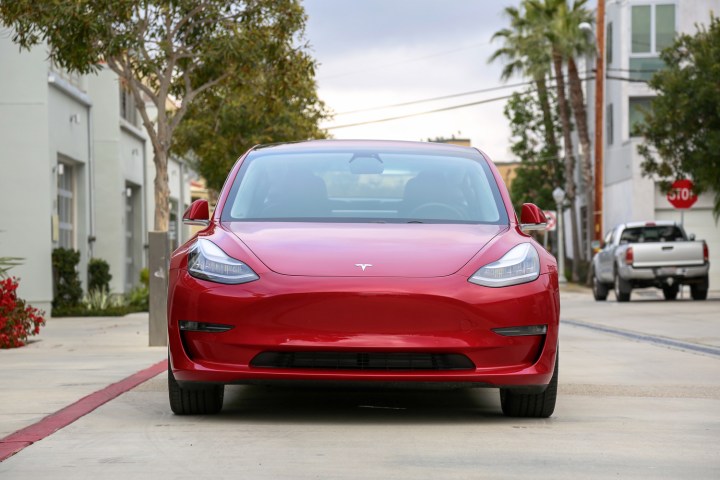
Having just barely achieved its goal of building 5,000 Model 3 electric cars per week by late August, Tesla said in its second-quarter earnings letter that it aims to increase production to 6,000 cars per week. But the company is still chasing profitability as it continues to post significant losses.
Musk previously hinted that Tesla would aim for 6,000 Model 3s a week, and the company confirmed that it hopes to achieve that goal by late August. The company said it expects to produce 50,000 to 55,000 Model 3s in the third quarter, representing an increase of 75 percent to 92 percent from the previous quarter, and continue ramping up production from there.
“We aim to increase production to 10,000 Model 3s per week as fast as we can,” the company said in its letter to shareholders. “We believe that the majority of Tesla’s production lines will be ready to produce at this rate by the end of this year, but we will still have to increase capacity in certain places and we will need our suppliers to meet this as well. As a result, we expect to hit this rate sometime next year.”
Tesla said it produced 53,339 electric cars in the second quarter, including 28,578 Model 3s, but, the company only delivered 18,449 during that time. However, Tesla said “deliveries should outpace production in Q3 as our delivery system stabilizes.” Tesla will also begin deliveries of all-wheel drive Model 3 variants next quarter and will add software features like classic Atari games to all models.
In addition to achieving its production goals, Tesla started making money on the Model 3 for the first time. The company initially lost money on every Model 3 it made. But Tesla said that gross margins, a measure of the revenue for each car after the costs associated with building it, turned “slightly positive” in 2018’s second quarter. Tesla expects Model 3 gross margins to increase to 15 percent in the third quarter and 20 percent in the fourth quarter of 2018. That will be achieved by lower production costs and high transaction prices, the company said.
But the company continues to lose money overall. While Tesla did post record revenue of $4 billion for the second quarter, it also recorded a loss of $743 million. This came despite Tesla’s efforts to cut expenses, including plans to lay off 9 percent of its workforce. Tesla losing money is not news, which underscores the company’s precarious position. It’s unclear how long shareholders will tolerate investing in a company that doesn’t make any money.
Tesla does expect to turn a profit in the third quarter, but the automaker still has several big projects underway that could eat up cash. The company plans to launch an electric semi-truck, a pickup truck, the Model Y crossover, and second-generation Roadster sports car. Tesla is also reportedly looking to build factories in China and Europe.


